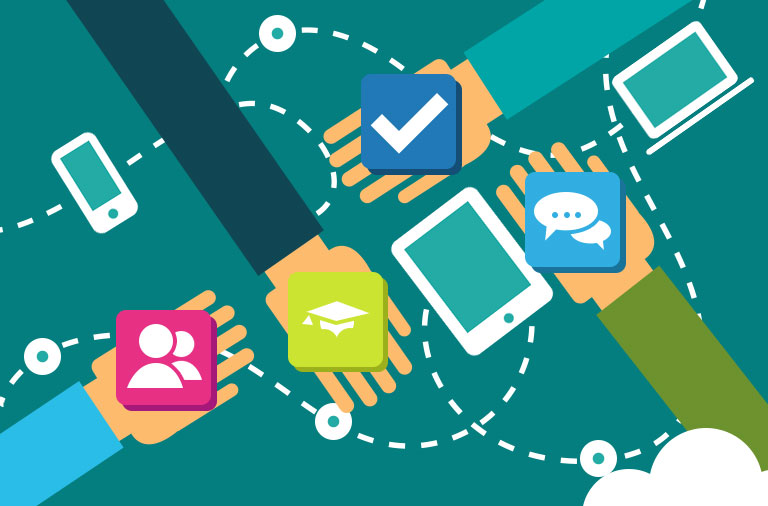Six Benefits to Adopting Mutual Action Plans
Mutal action plans, also known as customer success plan, joint execution plans or go-live plan, ensure the sales and delivery team is in alignment...
4 min read
![]() Dan Fisher
:
Nov 21, 2016 7:52:07 AM
Dan Fisher
:
Nov 21, 2016 7:52:07 AM

“Social learning” has been a hot buzzword in the world of training, learning and development for several years yet many people still often ask what social learning is and often get the term confused. In this post I'm going to share with you what social learning is and how adopting social learning into your sales training program can provide three core benefits to not only accelerate learning but also improve employee confidence and self-esteem, all of which drive improved performance.
What is Social Learning?
Social learning is not learning through social media, but rather learning that takes place through social interactions between peers. The term and its meaning is derived from the word ‘social’. Humans have a need to connect with each other because we're social in nature. When you look back at history and evolution you begin to notice that over time we have always relied on learning from each other such as sharing stories around the campfire.
To be clear, social learning is not simply the act of using social media to ask a question. Social learning is learning through each other and from each other. Marcia Conner captures it succinctly in her definition here:
“Social media is technology used to engage three or more people. Social learning is participating with others to make sense of new ideas. What is new is how powerful they work together.”
Before making the investment and launching the Menemsha Group sales enablement platform to deliver online sales training, I conducted a fair amount of research on social learning to understand all the fuss. The reason why we are hearing so much about social learning today is the advancement of technology. Technology allows us to share information across groups of people including our peers more quickly and easily where as in the past we had to rely on face to face collaboration (think live webinars, workshops, seminars). Groups or communities of people who use to have to meet face to face to share information and learn from each other can now gather online and across geographical time zones and instantly learn from each other. This is a major benefit of online learning and is having a massive impact on the way that we learn because humans prefer to learn from each other vs. being spoon-fed information. Social learning and the advancement of technology is allowing us to take advantage of that.
You’ve probably heard the term “tribal knowledge” which essentially means or refers to unwritten knowledge (unofficial policy or procedure) but best practices that should be known by others in the company to produce top performance and results. Social learning and the technologies that support it (social media, Learning Management Systems or LMS) accelerate social learning and the sharing of tribal knowledge. Let me provide an example.
When learners (sales professionals or recruiters) go through our online sales training program they are given exercises in which they record their role play sessions into their computer web cam (see inset below) for their manager and peers to review. After the manager reviews the audio/video recording and provides his or her feedback and score, the video is then shared with the peer group for all to learn from. This is social learning at its finest. Peers can now learn from each other and provide each other with feedback. While the manager’s feedback is important, the social learning that takes place is actually far more powerful. And if you notice in the screen shot to the right, not only do you see social learning but also gamification in which each learner's score is displayed. Social learning combined with gamification is powerful sales training tool.
is then shared with the peer group for all to learn from. This is social learning at its finest. Peers can now learn from each other and provide each other with feedback. While the manager’s feedback is important, the social learning that takes place is actually far more powerful. And if you notice in the screen shot to the right, not only do you see social learning but also gamification in which each learner's score is displayed. Social learning combined with gamification is powerful sales training tool.
Here are three other benefits to social learning that you need to take advantage of.
Asynchronous Learning
Asynchronous learning is where the learning can occur at any time and any place, where all parties involved in the conversation have access to the conversation but are not communicating instantaneously. Social networks free learners from the limits of time and place. Think about posting a Tweet or if I sent you and three others a text message. You can reply when you are ready to reply. The conversation is persistent but can happen in the background and doesn’t require immediate attention. This is advantageous for sales training because employees don’t have to participate in training at work or at a specific location or at a specific time. It provides flexibility. Think about mobile devices such as your smart phone or iPad. These devices are being used more and more frequently by learners who are spending their time asking others for information and resources to solve their problems or while searching for content to get help with solving tasks. If something is unclear they engage in discussions in online forums. This is how people learn today, they learn from others.
Building Self Confidence Through Peer to Peer Collaboration
It is human nature for one human to want to help another human with a difficult task or problem. By helping other people not only learn more about the topic or problem itself, they also gain valuable personal insight about themselves which builds confidence and self-esteem. Many learners enjoy spending their free time explaining difficult subjects to others which makes the process of learning fun and rewarding. Additionally, learners enjoy (and often prefer) being taught by and learning from their peers or someone who is an equal to them on the organizational chart than they do from their supervisor who “forces” them to learn.
Crowdsourcing Learning Content
Earlier I referred to the term “tribal knowledge” which refers to unwritten knowledge and best practices that should be known and applied by others in the company to produce top quality results. In other words, employees should be leveraging the collective wisdom that already exists within an organization because it accelerates the learning process. Taking advantage of social learning and supporting technologies such as learning management systems allow organizations to do just that. Many staffing leaders over the years have often wished and even said, “I wish I could clone Jim.” “Jim” of course being your top sales rep or your top recruiter. We still can’t "clone Jim,” but we can crowdsource sales behaviors and best practices and other information from employees like Jim and how he does things and share it with other employees to accelerate the learning process. We can capture how Jim does things and then share those behaviors and best practices through technology including video.
What steps are you and your organization taking to adopt social learning? How are you capturing and sharing tribal knowledge? Let’s start a conversation in the comments section below.

Mutal action plans, also known as customer success plan, joint execution plans or go-live plan, ensure the sales and delivery team is in alignment...

For the past few years, we've seen and heard the term "DevOps." You've likely seen them in the job descriptions you receive from your customers;...

Sales conversion ratios measure the effectiveness of your sales team at converting leads into new customers. It's an important metric to track for a...